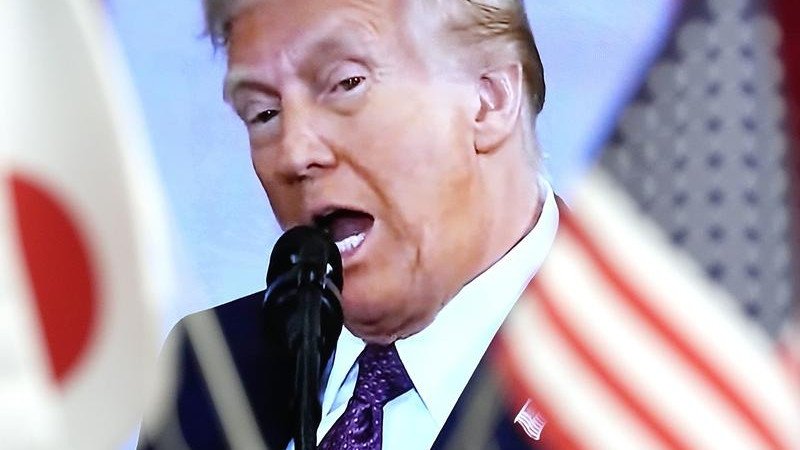THE NEW YORK TIMES: Trade deal could give Japanese cars a leg up in US market

The new trade agreement between Japan and the Trump administration could give cars made in that country an advantage over vehicles that come from Canada and Mexico.
President Donald Trump’s agreement with Japan, which was announced Tuesday, will impose a 15 per cent tariff on cars, which is considerably lower than the 25 per cent tax he placed on all imported vehicles in April.
On Wednesday, a group representing three of the largest US automakers — General Motors, Ford Motor and Stellantis — said the deal could set those companies back. Those three automakers collectively make more than 2 million cars and trucks in Canada and Mexico, many of them with American-made engines, transmissions and other parts. Those vehicles will still be subject to 25 per cent tariffs.
Sign up to The Nightly's newsletters.
Get the first look at the digital newspaper, curated daily stories and breaking headlines delivered to your inbox.
By continuing you agree to our Terms and Privacy Policy.The three companies worry that Trump’s agreement with Japan will give automakers like Toyota Motor and Honda a big leg up unless the administration reaches similar deals with Canada and Mexico.
“American automakers still need to review the details of the U.S.-Japan agreement, but any deal that charges a lower tariff for Japanese imports with virtually no U.S. content than it does North American-built vehicles with high US content is a bad deal for the US industry and US autoworkers,” Matt Blunt, president of the American Automotive Policy Council, said in a statement. The council represents GM, Ford and Stellantis.
A group that represents the US operations of several foreign automakers, known as Autos Drive America, said it was urging the Trump administration to reach similar agreements with Canada, Mexico, South Korea and the European Union.
“We share President Trump’s vision to make the US the worldwide centre of automotive production, and our member companies need stability in order to create an environment where we can maintain our competitive edge both in the US and on the global stage,” the organisation said.
Toyota and Honda did not immediately respond to requests for comment. Nissan said it was “encouraged” by the new agreement but was still looking to review the final details.
Of course, even the 15 per cent tariff on Japanese cars will have an effect on the prices of those cars. Analysts said Japanese automakers were likely to raise their prices.
“It’s coming to the consumer,” said Marc Cannon, an auto retail consultant who has been advising dealers on how to deal with tariffs. “A lot of the manufacturers and dealers are trying to figure out how they’ll do it, but even at 15% it’s too much for the car companies to just eat themselves.”
Trump’s trade policies are already having a significant impact on the auto industry. On Tuesday, GM reported that tariffs cost it $1.1 billion in the second quarter. Stellantis, the maker of Jeep, Ram and Chrysler vehicles, previously said tariffs had cost it close to $350 million in the first half of the year.
Under the new agreement with Japan, the Trump administration said, Japan will take steps to open its market to more American cars. But it’s unclear how many more cars American companies will be able to sell in Japan, where foreign automakers have long found it difficult to succeed.
One big problem is that Japanese cars travel on the left side of the road and steering wheels are placed on the right. Few such cars are made in the United States, and manufacturers are unlikely to dedicate factory space to such vehicles unless they are sure they can sell lots of them.
Another issue is that US automakers tend to produce lots of sport utility vehicles and pickup trucks. They are a lot larger and more expensive than the sedans and small cars that many Japanese consumers buy.
It is likely to take some time for the effect of the president’s automobile tariffs to become clear. When he began discussing taxes on imported vehicles, some consumers rushed out to buy new cars, causing sales to spike for a time. Dealers also held considerable stocks of models that had been imported before any tariffs were increased.
Toyota, Honda and Nissan all sell lots of vehicles in the United States that are made in Canada and Mexico, and import mainly entry-level or specialty vehicles from Japan.
Alan Haig, whose consulting firm in Fort Lauderdale, Florida, advises car dealers, said the Japanese manufacturers and their dealers were likely to spread the increased costs across all or most of the vehicles they sold, regardless of where they were made.
“They won’t simply raise prices of vehicles made in Japan and leave prices of their US-made vehicles alone,” he said.
As a result, he added, vehicles from Japanese automakers probably won’t jump suddenly. “The consumer may not see that the price of vehicles is going up more than groceries,” he said.
This article originally appeared in The New York Times.
© 2025 The New York Times Company
Originally published on The New York Times
